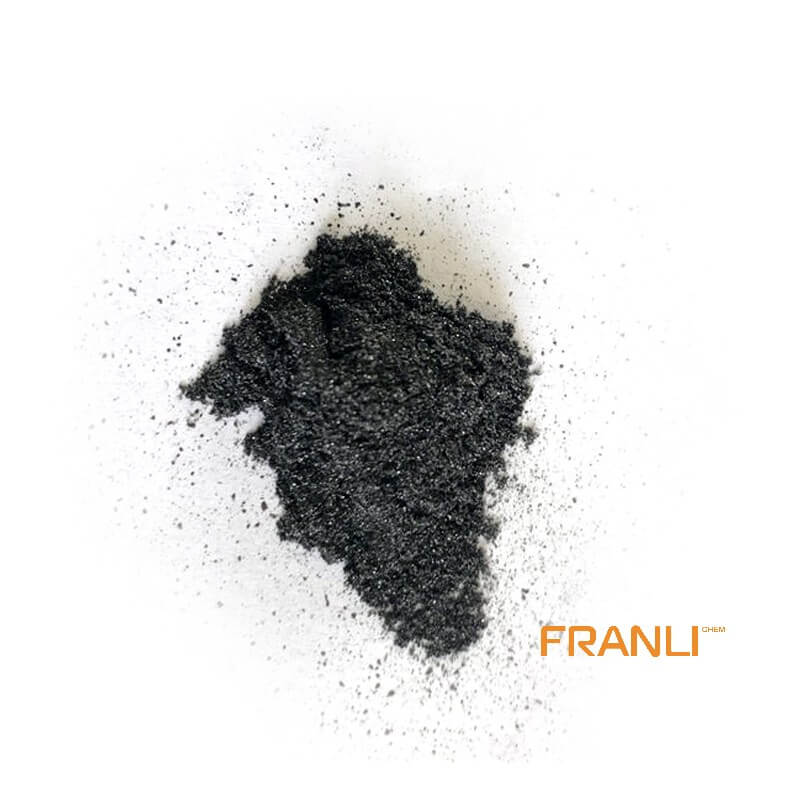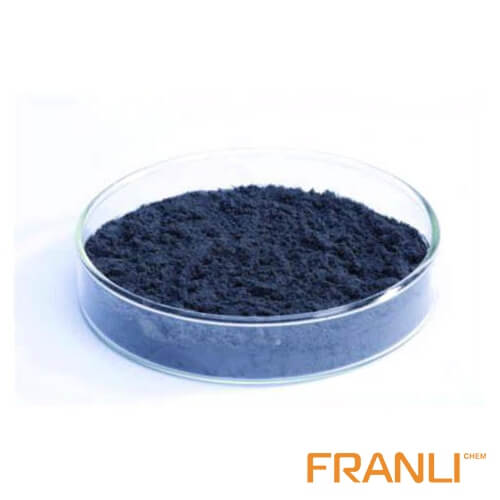


Expandable Graphite
Size
0.50mm or 0.106mm, etc
Package
25 kg small bags into ton bags
Origin
China
Features
Preservative/Electrical and thermal conductivity, etc.
Application
Fireproof sealing element, flame retardant, refractory brick, etc.
Expandable graphite crystal is a typical layered carbon material. Other heterogeneous particles such as atoms, molecules, ions, and even atomic clusters are inserted into the interlayer of crystalline graphite by physical or chemical methods to form a new layered compound, which is called graphite interlayer compound, namely expandable graphite.
Request a quote
Review on preparation technology of expandable graphite
Abstract: with the development of modern production to high speed and high parameters, especially the rise of new technologies such as atomic energy, electrical conductivity, geothermal, aerospace, and so on, the requirements for materials are becoming higher and higher. For example, sliding seals at the top of rotary engines, high-temperature seals in petroleum, chemical, metallurgical and geothermal industries, and radiation-resistant seals in the nuclear industry all need high-performance sealing materials with high-temperature resistance, corrosion resistance, radiation resistance, flexibility, resilience, and long-life oxidation resistance. In recent years, it has been proved that expandable graphite and its matrix composites can well meet the requirements of various aspects. In this paper, the preparation method, technology, application, and development trend of expandable graphite were summarized by consulting literature.

Expandable graphite is no stranger to those who study carbon materials, but how to define the word “expansion”? How many times can expandable graphite be called expandable graphite? There is no clear definition and distinction between expandable graphite and expandable graphite; Is expandable graphite and graphite intercalated compound a kind of material? Expandable graphite refers to a general term of an intercalated compound or expandable graphite. What is the scope of the size of flake graphite to make graphite expandable? Why do we need to give a clear definition? Natural graphite is a layered structure.
Graphite is a hexagonal sheet structure unit with a covalent bond, and the interlayer depends on delocalization π The key is connected with van der Waals force and can slide relatively. The van der Waals force between the layers of natural graphite is very weak, so other heterogeneous particles such as atoms, molecules, ions, and even atomic clusters can be inserted into the layers of crystalline graphite by physical or chemical methods. Some of them can react with the electrons in the layers to form intercalation compounds. Natural graphite can be mixed with nitric acid, sulfuric acid, potassium permanganate, hydrogen peroxide, ozone, and other strong oxidants to form expandable graphite.
When the expandable graphite is heated by a muffle furnace or microwave, the graphite carbon layer expands greatly along the c-axis direction, forming loose, low-density worm graphite with a large number of unique network micropores, That is, expandable graphite or worm-1ike graphite (eg, Fig. 1 (c)] [2]. The reason why expandable graphite can expand is that the compounds between layers decompose and produce a large number of gases. These gases produce a great thrust under pressure, and the carbon layer expands outward due to the thrust.
The expansion temperature at this time is the initial expansion temperature. It was German scientist schafautl who first discovered expandable graphite. In 1841, he added graphite to the mixture of concentrated sulfuric acid and slightly concentrated acid, and the resulting graphite was twice the original volume. In the early 1930s, hoffinan et al. Carried out a large number of experiments to study intercalation compounds for the first time.
In this stage, the new materials and intercalation between graphite layers were studied. In the second stage, from 1974 to 1987, Japan used lithium and graphite fluoride as raw materials to produce high-energy batteries by electrochemical method, which opened the door to the commercial application of intercalation compounds; In 1975, American scientists found that the electrical conductivity of graphite ASFS intercalation compound was very high, and the electrical conductivity of copper was even lower than that of graphite ASFS intercalation compound. Therefore, there were more and more researches on expandable graphite in the world; In 1978, due to the research of graphite intercalation compound superconducting materials, the research of expandable graphite was less.

At present, it is the third stage, which mainly studies the industrial application prospect and engineering technology of expandable graphite. Hunan University has a certain history in the research of expandable graphite,The representative is Professor Xu Zhongyu, who used concentrated sulfuric acid, concentrated nitric acid, and sodium nitrate as oxidants to study the application and properties of expandable graphite since 1984.
The graphite with significant expansion of lamellar spacing by chemical or physical methods not only maintains the properties of high-temperature resistance, oxidation resistance, corrosion resistance, self-lubrication, and radiation resistance of graphite itself but also has good adsorption and catalytic properties, as well as resilience and high conductivity caused by intercalation between graphite sheets Energy, aviation, military, and other fields, have been widely used as electrode materials, sealing materials, oil absorption materials, fire retardant, military smoke agent, anti-static materials, etc. for example, the flexible graphite made from it is known as the “king of sealing”.
The residual sulfur in the early preparation of expandable graphite products will corrode the metal, and it is easy to be oxidized under the condition of high temperature and the presence of an oxidant, which reduces the sealing effect. Another problem of the industrial products of expandable graphite is that the initial expansion temperature is very high, usually as high as 600 ℃ to have a higher expansion volume, generally at 900 ℃ expansion volume can reach 250 ml / g. In the fields of multi-band smoke agent, intumescent flame retardant, and fire extinguishing agent, it is hoped that the lower the expansion temperature of expandable graphite, the better; For other applications, low expansion temperature is also beneficial to reduce the energy consumption, expansion equipment, and process conditions.
Therefore, low-temperature expandable graphite with excellent expansion performance at low temperature is a new development direction of expandable graphite. In the past 20 years, around the goals of increasing the expansion ratio of graphite, reducing the sulfur content, and reducing the energy consumption and cost in the process, a lot of research work has been carried out on the preparation process of expandable graphite in China, and the related performance evaluation has been carried out. In the process of slow heating, when the initial expansion temperature is reached, the gas begins to decompose, and then slowly heats up, and the gas decomposes slowly, which can not produce enough pressure to make the graphite expand along the C circle, so it almost does not expand; The expandable graphite is put into a container and then into a high-temperature furnace. As the container absorbs heat immediately after entering the furnace, the temperature of the expandable graphite decreases, so the expandable graphite can not reach a high temperature in an instant and get low expansion graphite.), The relationship between heating time and the material ratio of different oxidants and intercalation agents was studied.



